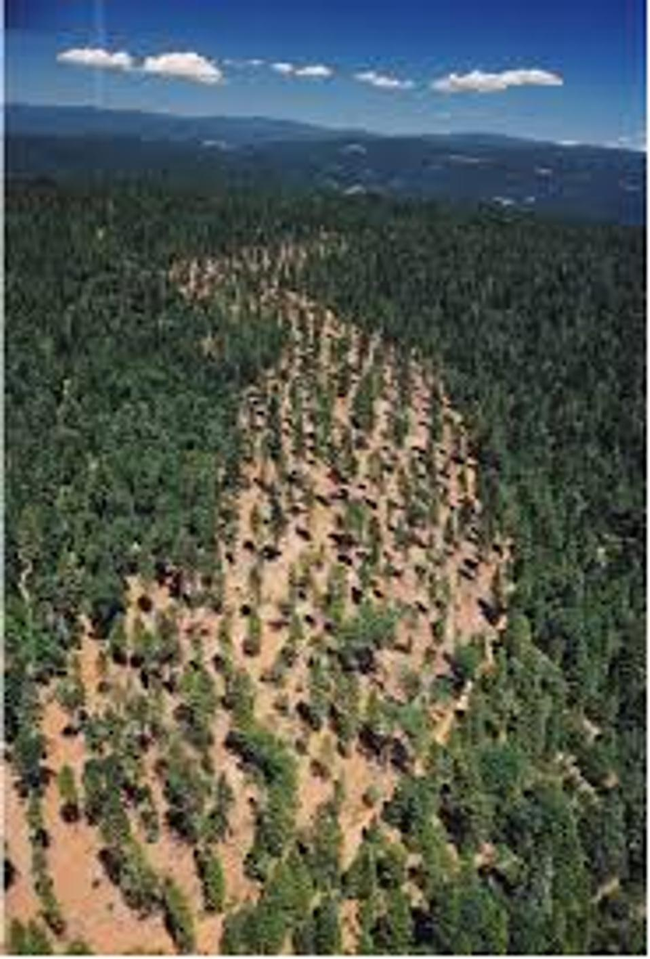UC ANR experts suggest ways to ease California's fire crisis
Three news articles over the last weekend shared comments from UC Agriculture and Natural Resource's experts about forest management practices that can help reduced the catastrophic wildfires being experiences in the West.
Prescribed burns and management change fire behavior
Shaver Lake forest historian Jared Dahl Aldern tweeted that, when the high-intensity Creek Fire arrived at the Shaver Lake forestlands, it turned into a low-intensity “surface fire,” which does not threaten the bigger and older trees. “The fire comes up to @SCE land,” tweeted Aldern, “drops to the ground, and stays out of the tree crowns.”
Whatever happens to Shaver Lake, says University of California Cooperative Extension specialist Rob York, “There are lots of cases in the scientific literature of prescribed burns having changed fire behavior.”
The image below shows a “shaded fuel break,” consisting of selectively-thinned forest surrounded on both sides by dense forest. “The strip of forest may change fire behavior in the treated area,” said York, “but not on either side.
Forbes, Sept. 13, 2010
Michael Shellenberger
Millions of dead trees fueling unprecedented firestorms in the Sierra Nevada
“I don't want to be alarmist. But I think the conditions are there,” said Scott Stephens, a UC Berkeley professor of fire science and lead author of a 2018 paper that raised the specter of future mass forest fires as intense as the Dresden, Germany, and Tokyo firebombings.
“As those [trees] continue to fall, the physics of it are unchanged. If you have dead and downed logs … the fires described in warfare are possible.”
A combination of prescribed fire, restoration thinning and making rural communities more fire resistant are needed, Stephens said.
“If we don't come out of this year focused on that and try to move forward, I just don't know if there's much hope,” he said. “I'm always hopeful. But I'm getting tired.”
Los Angeles Times, Sept. 13, 2020
Bettina Boxall
Results of long-time fire suppression
Perhaps the most present term in news articles as one of the main causes for fires getting so big so fast is fire suppression, which has resulted in a lack of fire for more than a century.
In the 1920s, this idea of suppressing wildfires grew even more when the Forest Service decided intentional burning was a bad idea. In 1924 a Siskiyou National Forest Supervisor said the ‘“Brushy Hell' of shrublands must be protected for the benefit of future timberland succession, ‘so leave them alone.'”
“The Forest Service said it ruins forests, it was bad forest management,” said Kocher. “Then in 1924, California followed suit and said it was not legal to burn forests on purpose.”
Kocher says this idea of letting trees grow and not letting forests burn naturally every decade wasn't this malicious idea either.
“They would have thought, ‘Oh, we're doing this great work where we're leaving all these extra trees for people to use for timber moving forward,'” she said. “I don't think those early foresters ever could have foreseen how fire could get away from them.”
Capitol Public Radio, Sept. 12, 2020
Ezra David Romero

